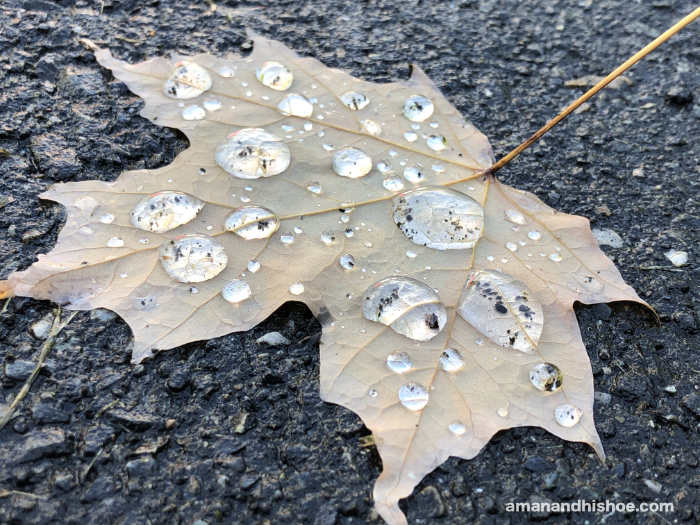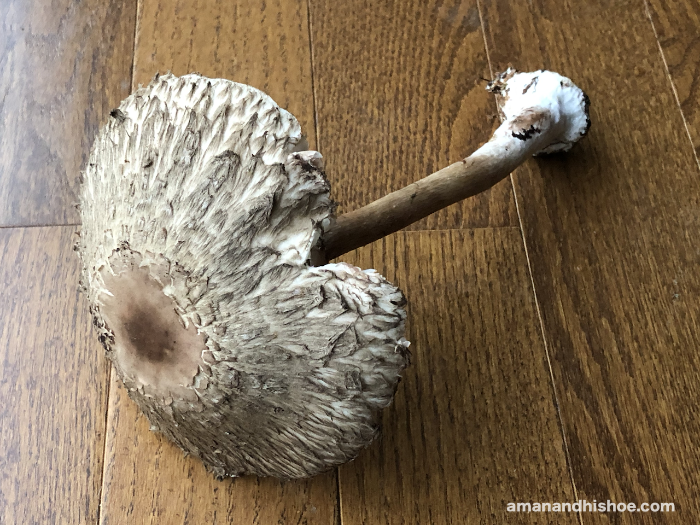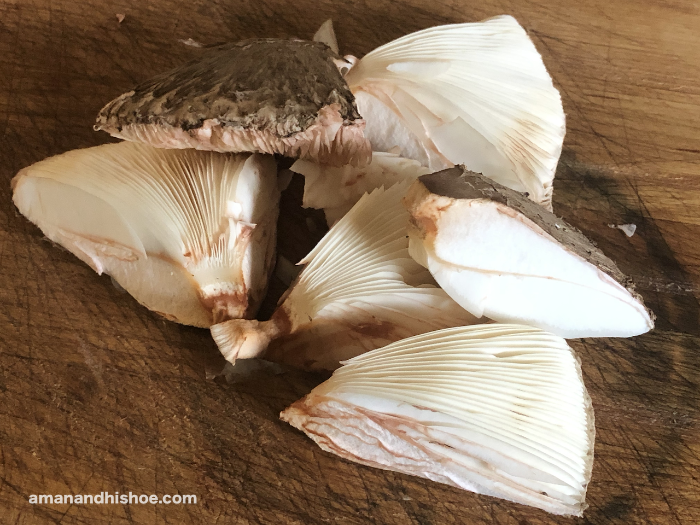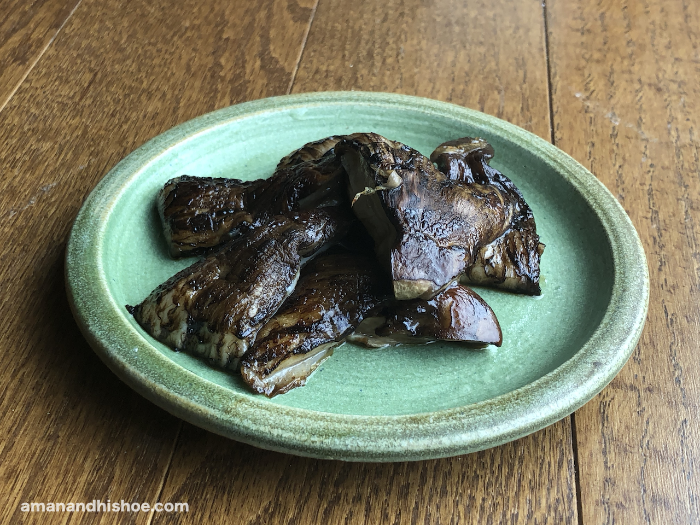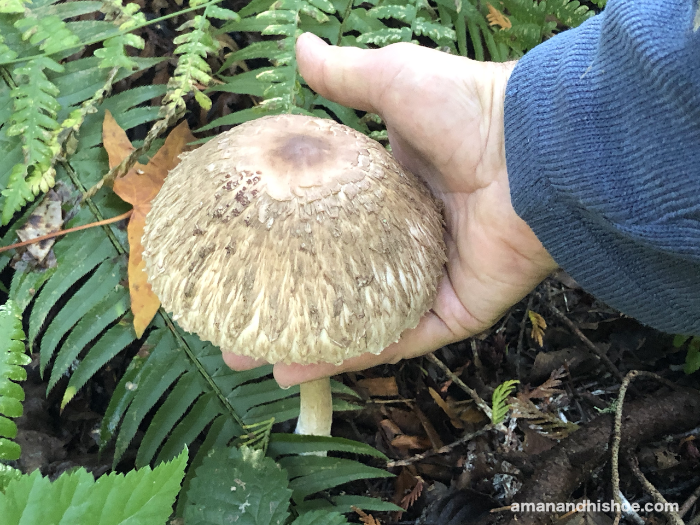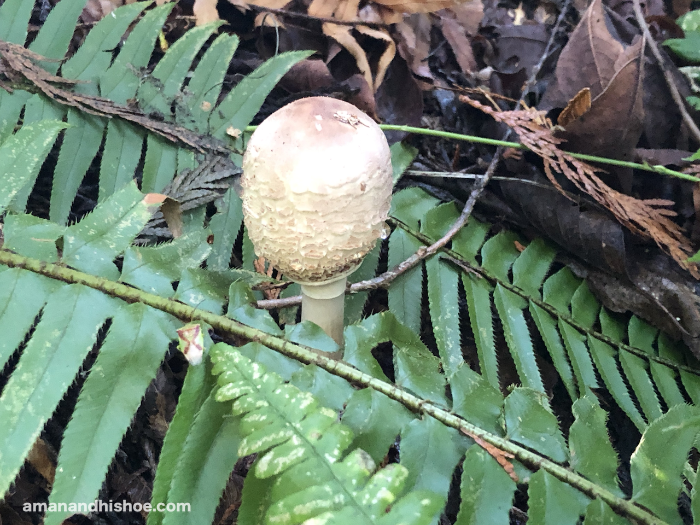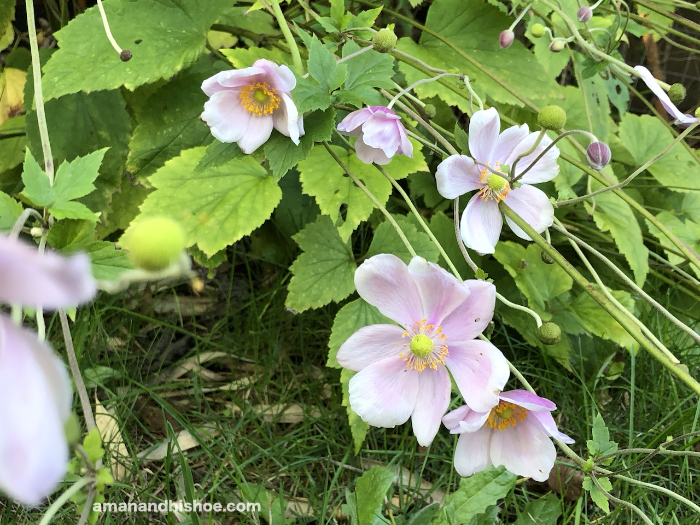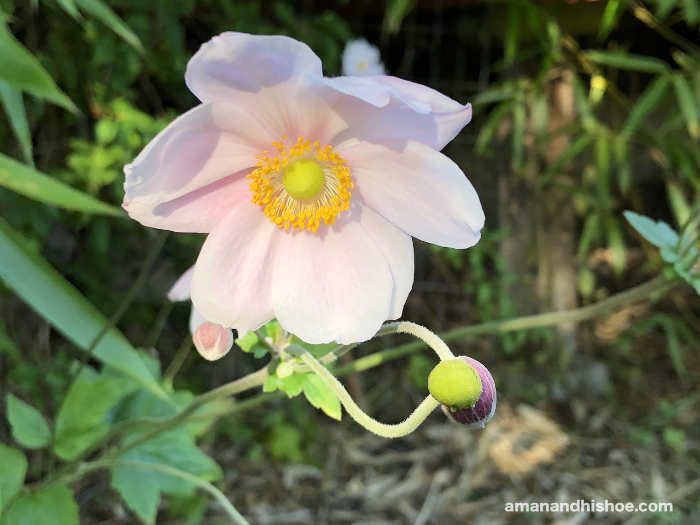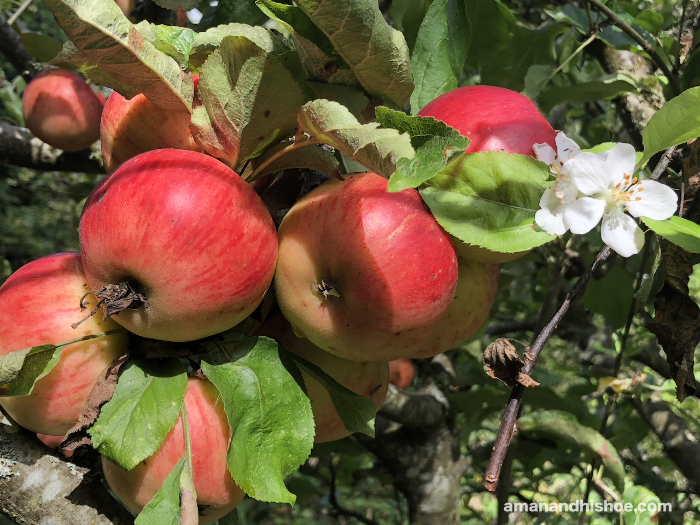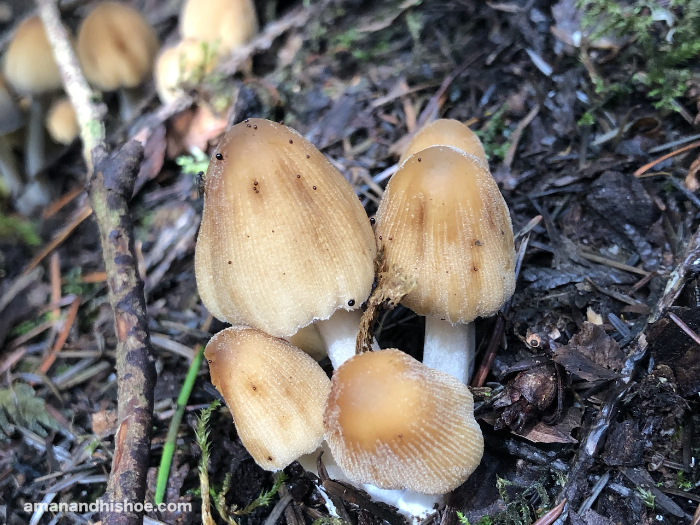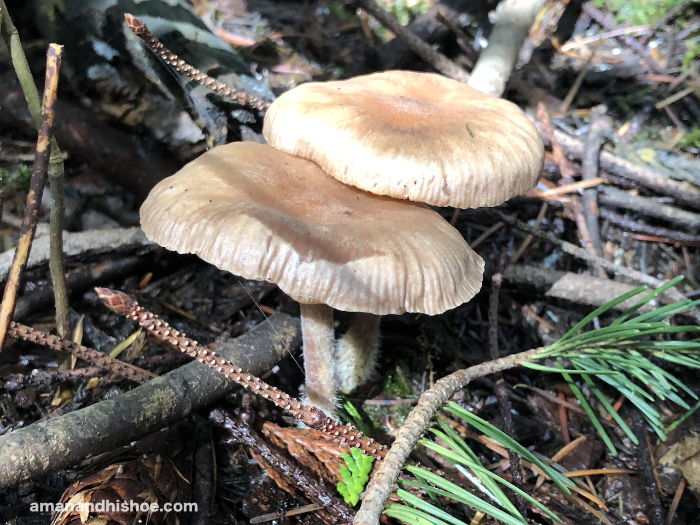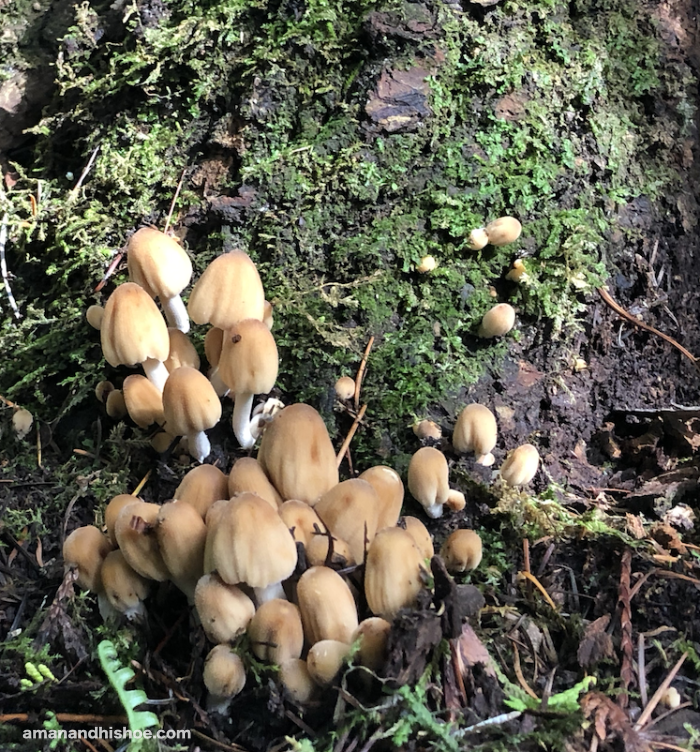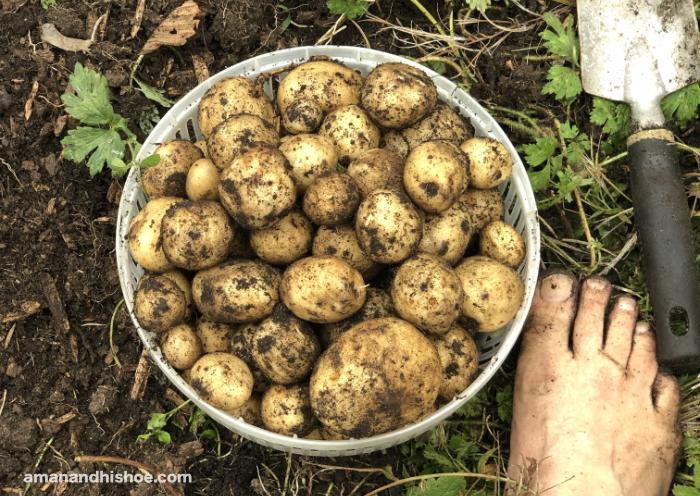
The clouds and rain come nearly every day now. The rain held off for yesterday’s farmers market. When I checked the forecast for next week’s Saturday market, it showed rain all week except Wednesday, and rain on into the following week. This morning the forecast has changed and the rain ends Tuesday with sun and clouds through Saturday. Which will it be, rain or sun? I’ll know for sure on Saturday when I set off for the market. Until then, there’s no point worrying about it.
The moist earth beckons me to work barefoot. Shoes have no place in the home. Maybe they have no place in a garden either. If the earth feels lovely on your toes, you know it’s a perfect bed for potatoes.
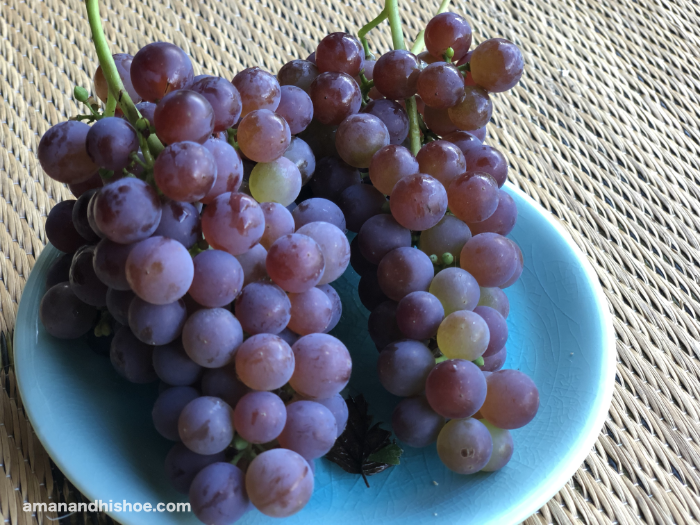
This year’s grapes are so delightful. With the skies gray and the sun off to its wintering grounds, the grapes are a reminder of summer’s blue skies.

I took the seal off the white miso I put up in February. It turned out better than I imagined. You make a whiter miso by adding barley or rice to the soybeans. It’s time to put up next year’s miso. How much red? How much white? Barley or rice? If I make a batch and try some corn, will that be the first time anyone in all of history has made miso with corn?
A quick check to see if there was such a thing as miso made from corn resulted in me stumbling on a blog that talked about the wondrous cooling power of corn silk. Evidently, it cools the body and is great for when you have a fever or hot flash. One site claims, “Corn silk is used for bladder infections, inflammation of the urinary system, inflammation of the prostate, kidney stones, and bedwetting. It is also used to treat congestive heart failure, diabetes, high blood pressure, fatigue, and high cholesterol levels.” It sounds like you could chuck your entire medicine cabinet and cure all your ills with corn silk. Odd that I’ve never heard of a doctor telling a patient to eat more corn silk.

Happy has become quite the stately rooster. He has his admirers, and some of the young white roosters I unintentionally acquired this spring when I ordered Welsummer hens, look up to him and follow him around.
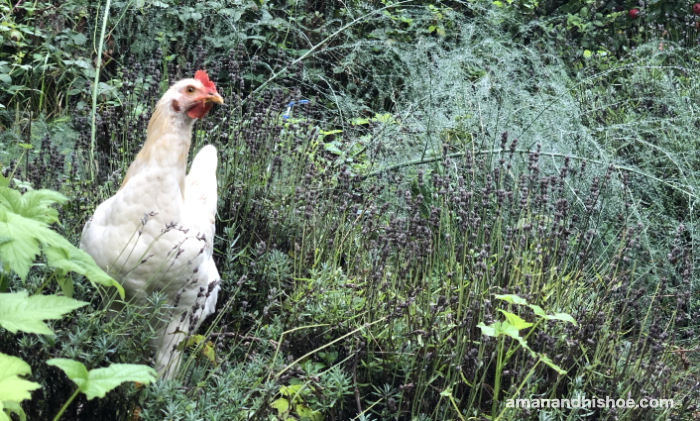
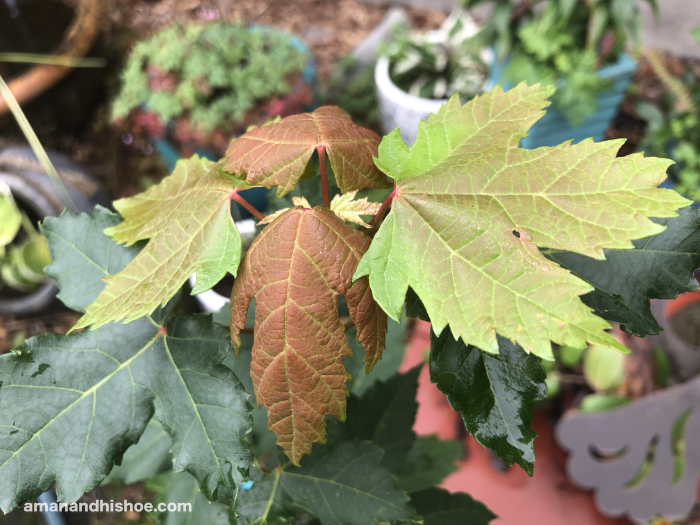
Even with fall deepening, the maples keep unfolding new leaves. In the wet, soothing fall air, their new-leaf red will barely turn green before they turn red from the first frost.

